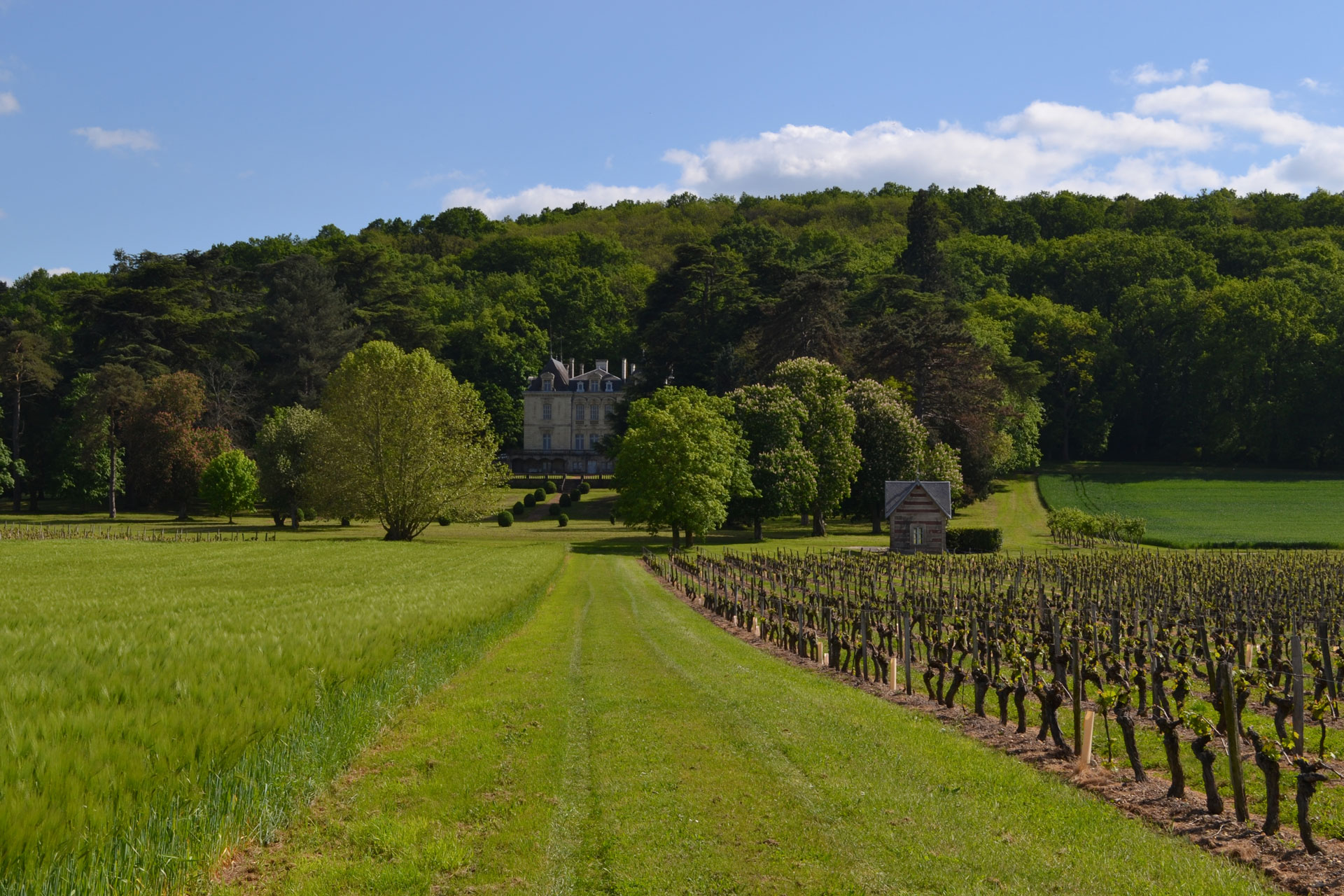Red grape variety: 100% Cabernet Franc
White grape variety: 100% Chenin
Planting density: 4 500 plants per hectare
Annual production: 600 hectoliters
Soil worked either by grassing or by plowing
Sustainable fight against plan diseases

From the XVIth century the neighbouring seigneuries of Vaugaudry and Plessis-Gerbault already belonged to the same family, since the first known lords were Jacques Pommier for Vaugaudry and Jean Pommier for Plessis-Gerbault.
In the XVIIth century the two seigneuries became the property of an important family of magistrates established in Chinon since the XVth century, the Dreux. In 1680, Anne Françoise Catherine, wife of Philippe Dreux, maître des requêtes and advisor to the King, hit the headlines for her relations with the Duke of Richelieu and her compromise in the “La Voisin” poison case.
In the XIXth century, the owner, Senator Joubert, reshaped the property by building the current castle on a new location, around 100 meters from the old noble house of Vaugaudry.
This location was chosen because it takes full advantage of the beautiful view of the Chinon fortress. He also undertook to build a wall surrounding the property’s 58 hectares.
The cultivation of vines, which had been practiced there for a very long time (see Rabelais), intensified from that time on. The winery was built at that time, as evidenced by a mosaic and a drawing which decorate its walls and bear the date of “1903”.
Between the two wars, repeated changes of owners, poor sales of Loire wines, and the attraction for competing crops, led to significantly reduce the Château de Vaugaudry vineyard.
In 1949, the property was finally acquired by Doctor Bonnet, grandfather of the current manager. Since 1980, a return to vines has been initiated and the vineyard now reaches 15 hectares.
Red grape variety: 100% Cabernet Franc
White grape variety: 100% Chenin
Planting density: 4 500 plants per hectare
Annual production: 600 hectoliters
Soil worked either by grassing or by plowing
Sustainable fight against plan diseases
The cellar, with a capacity of 1,550 hectoliters, was equipped with modern equipment in 1989, in a winery designed at the beginning of the century.
The harvest is carried out mechanically and manually, depending on the plot. The grapes are entirely destalked, then transported to each vat by a conveyor belt with buckets.
The vinification process is conducted in line with long-standing traditions (pigeage and pumping over of the must) perfected by modern techniques (temperature control and micro-oxygenation) with the primary philosophy of preserving each vintage’s character (strength or finesse).
Fermentation and maceration last 8 to 21 days depending on the vintages and harvests.
After devatting, the passage into barrels is carried out very selectively so that the wood contribution is not excessive.
The wines are then bottled and stored in tuffeau cellars.